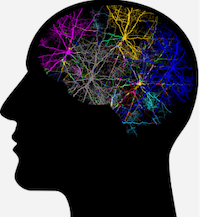Video
Considerations for Nonmedication Therapy in Epilepsy
Michael R. Sperling, MD: When do you think about offering surgery, Trevor? When do you think about offering other nonstandard medication treatments?
Trevor J. Resnick, MD: So I look at it in 2 ways. One, if you look at the data of a medication failure, once you’ve tried 2 appropriate medications and they’ve failed, your chances of achieving seizure freedom are very, very small. So under that scenario, I will suggest that the patients be evaluated to see if they are candidates for surgery. There are other alternatives to surgery as a treatment for patients, but I think from a seizure-freedom standpoint, that’s the 1 treatment that offers the best option for the patient being seizure-free.
Michael R. Sperling, MD: And are there some people whom you would tend to move somewhat earlier into that surgical pipeline than others, for example?
Trevor J. Resnick, MD: Yes. So again, if you look at the Venn diagram, you know if they have a focal lesion and they have seizures and they have spikes on their EEG [electroencephalogram], so I will do that much earlier.
Michael R. Sperling, MD: So seizures and spikes referable to the lesions.
Trevor J. Resnick, MD: Referable to lesion. And obviously patients who are nonlesional or close to eloquent cortex, my resistance is higher.
Michael R. Sperling, MD: What about diet therapy, Eric? Do you recommend that fairly often?
Jesus E. Pina-Garza, MD: I use it for some of my patients. I still remember when we had that movie, First Do No Harm. I felt it did a little harm because it was misinformation. So the diet is not a natural treatment, but it’s an effective therapy for some patients. For some it’s actually their third therapy, like for glucose transport efficiency. So there are some places where you have definitely a niche for the diet. My experience is that it can help both kids and adults in all types of seizures. But if diet was easy, we would not have an epidemic of obesity. So it’s not easy. When you talk about just taking a pill once a day, we talk about problems with adherence; adhering to a ketogenic diet is not easy.
So there are circumstances where that makes it easy. For a person who is fed through a G-tube [gastronomy tube], it’s supereasy to provide that kind of treatment. I think a lot of the misconceptions about eating fat and the diet being a very high risk for heart disease probably are not correct because it is different eating a lot of fat when you don’t eat carbs, because you are burning that fat all the time. It’s effective for some patients, but it’s definitely hard. So I would say that less than 0.5% of my patients are receiving that type of therapy.
Michael R. Sperling, MD: I must say, even on the adult side, where diet is used far less than in children, we have had some success with it, or at least in getting people to try it. And the obesity epidemic, unfortunately, means that people are somewhat more open to trying diets if they could kill 2 birds with 1 stone. So the modified Atkins diet has been suggested to have some efficacy against seizures and may play a role in weight loss. I must say, I have not been terribly impressed by the efficacy. But it’s an easy thing to decide that it hasn’t worked if someone gives it a fair try after 2 or 3 months. And then you’ve ticked off that box, and if they’ve had a nice response then 1 could go.
Transcript edited for clarity.





